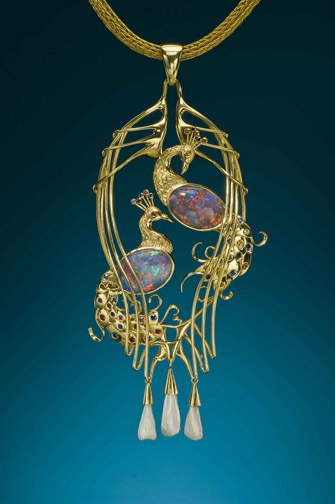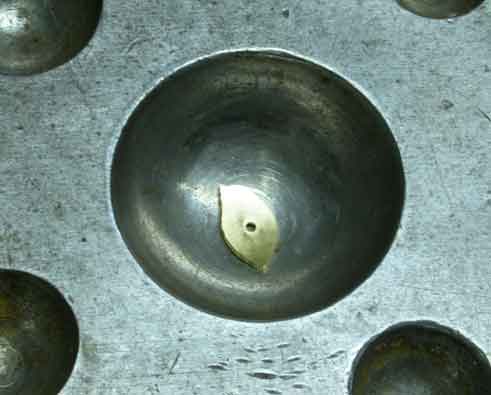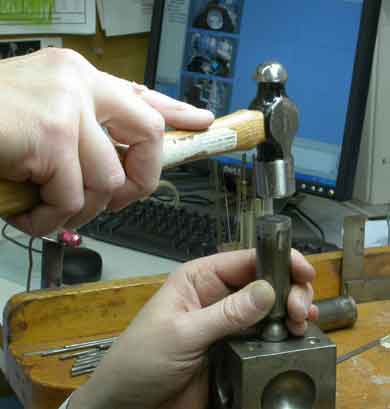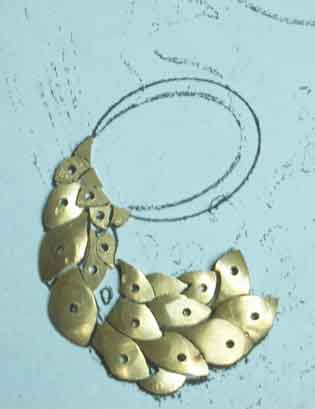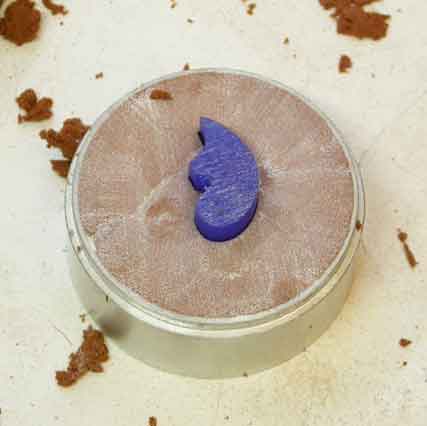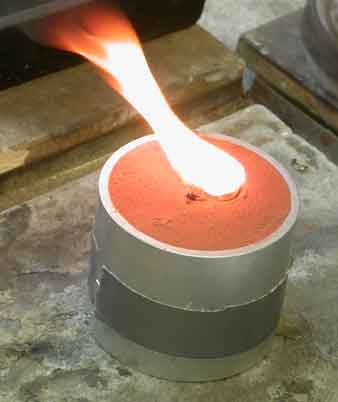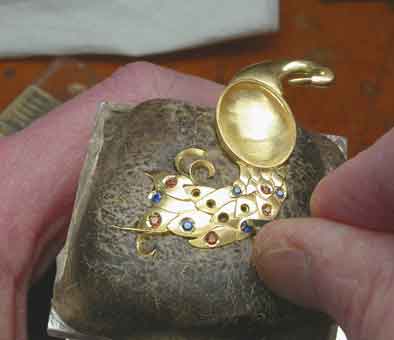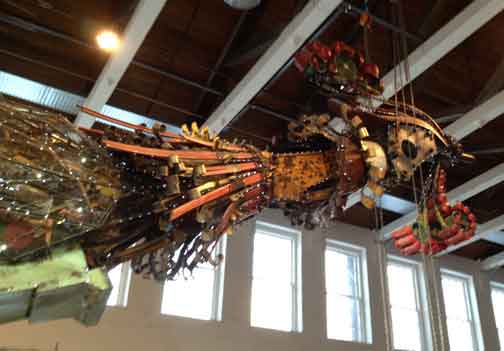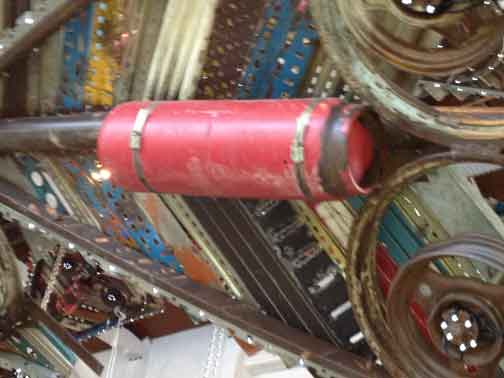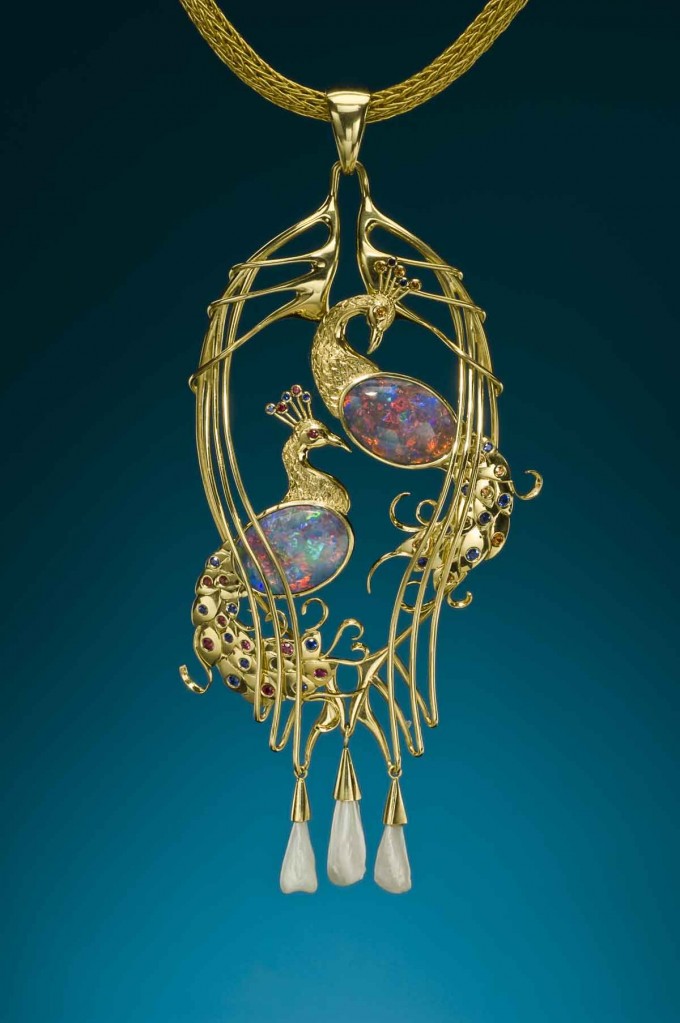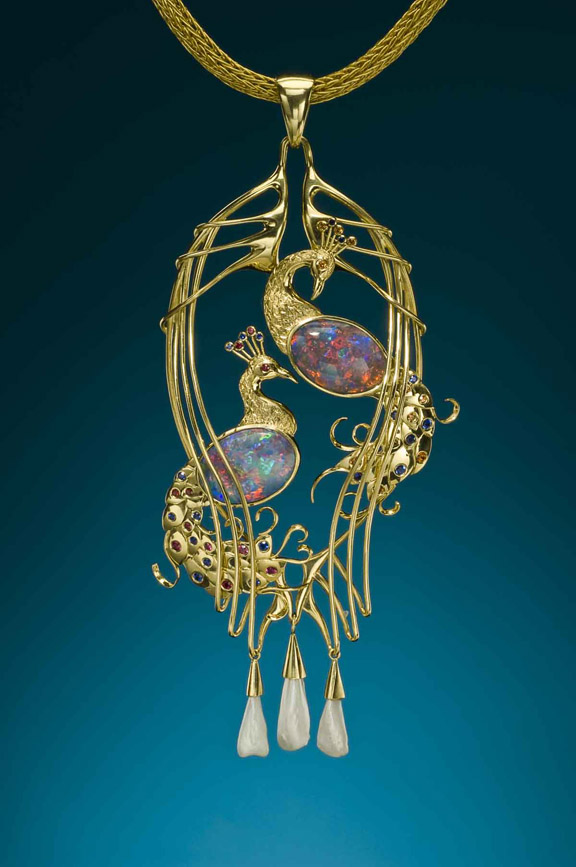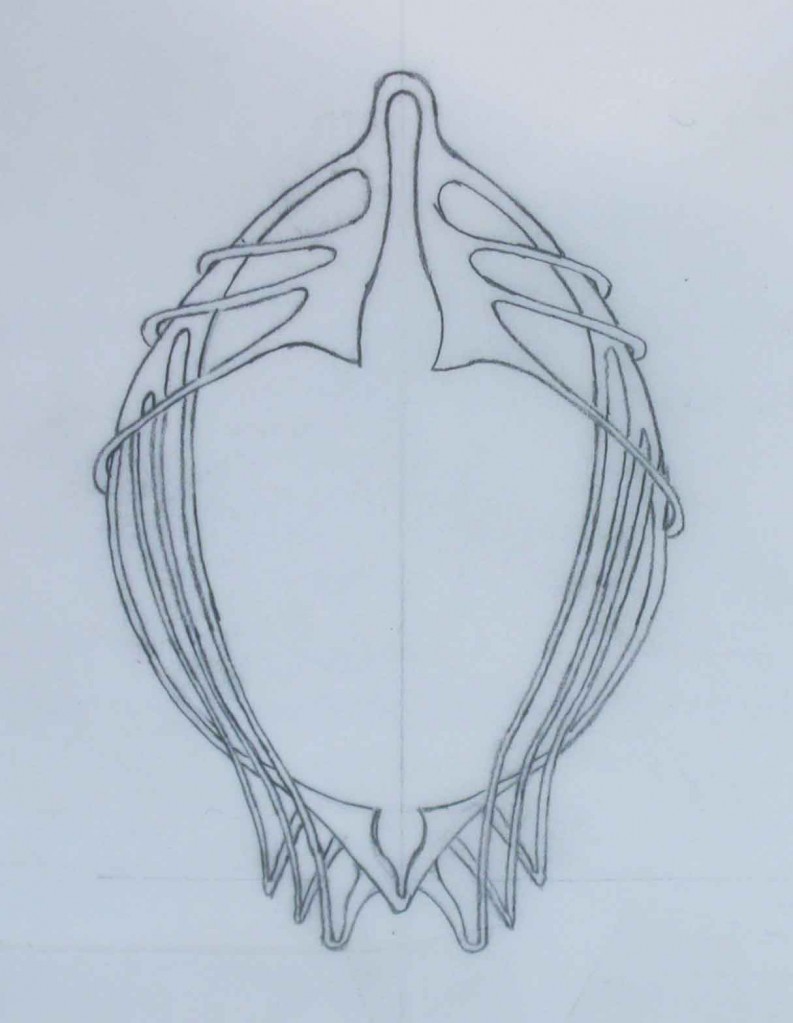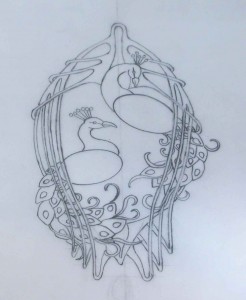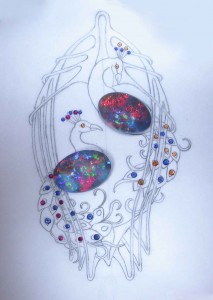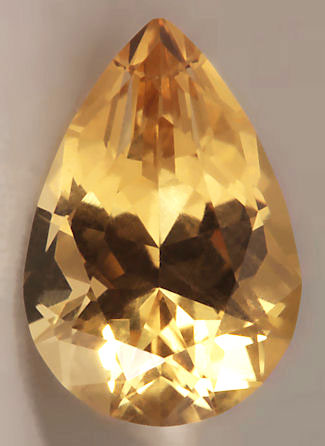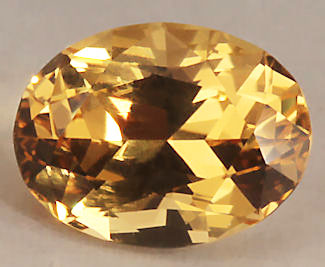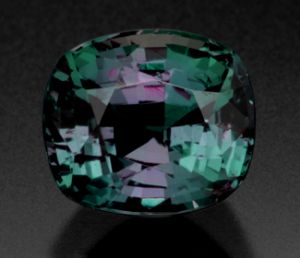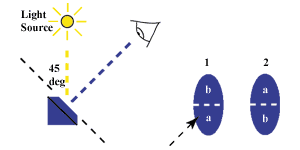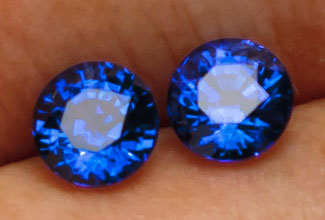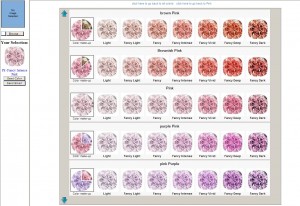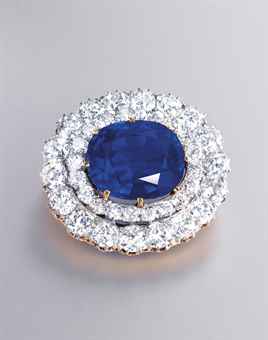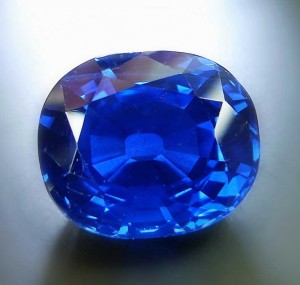by Rebekah V. Wise
©2011
“Silver is the best material we have; silver has this wonderful shine like moonlight;
a light taken straight from a Danish summer’s night when covered by dew;
silver can look like magical mist. “
Georg Jensen
My love affair with Georg Jensen and his jewelry began some thirty years ago in that mecca where everything jewelry is possible—New York City. In those early days I had fallen head over heels in love with Scandinavian silver jewelry.
As a buyer and collector, it did not take long before I could see and feel the difference between Jensen silver and all other vintage silver jewelry. The rest of the story, as they say, is history.
Fast forward to the present. Not long ago a client asked to see a Jensen piece. I proceeded to tell her it was designed by Georg Jensen. “Who’s that?” she asked, slightly offended that I seemed a little surprised she didn’t know.
Under-appreciated and under-esteemed—even as the 20th century’s most renowned silversmith—this vintage Jensen bracelet with moonstones inextricably drew in a totally uninitiated young woman who looked, and understood–the difference.
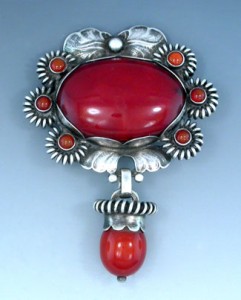
Early Jensen Arts and Crafts Brooch with Red Amber
Collectors and aficionados of vintage Jensen silver jewelry understand! Beautiful to look at, beautiful to wear; the designs just have a look—elegant, understated, a patina and luster to the worked silver that is unique.
From the early Skonvirke (Arts & Crafts) buckles, hair ornaments, and brooches to the most abstract modernist necklaces,
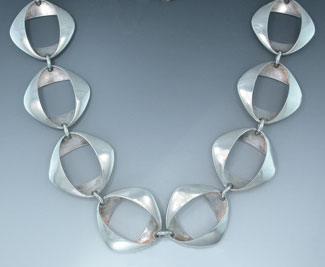
Henning Koppel modernist necklace
Jensen the man and Jensen the company have made major inroads into 20th and 21st century design. His influence is far-reaching, his jewelry designs copied and reference all over the world, easily discernible in 1940’s-50’s jewelry from Europe and North America.
Jensen opened his workshop in 1904 and started making jewelry, concentrating on small items which required little initial investment. Flatware and hollowware followed only later when he had acquired capital. The 1st quarter of the 20 century was Jensen’s heyday, especially the decade of 1908-1918, a period during which he was so happy in his life and productive in his designs that he reached the apogee of his artistry.
Unusual in a workshop, Jensen gave free reign to his designer/silversmiths, designs were credited not only in Jensen’s name, but also in the individual artists’ names. This created an atmosphere of kinship within the ranks, and an artistic freedom that made for the unbridled flow and exchange of ideas.
Unmistakable in their Arts & Crafts ornamentation, these early designs define what we have come to know as the “Georg Jensen Style”, his designs replete with leaves, flowers, grapes, insects and birds. Set with inexpensive gemstones such as coral, amber, lapis, and moonstones, he created jewelry for the up and coming middle classes to enjoy and wear—pieces that were practical as well as beautiful—pieces that were also works of art. No mass production, each piece was made one at a time.
Jensen’s early designs are iconic, his early training as a sculptor evident in the treatment of the silver. Hand-wrought and modeled like miniature sculptures, the silver was often worked with repoussé and chasing, the highs and lows of the metal glinting from the strikes of the hammer. Jensen’s silver looks and feels unmistakable: not only the working of the metal and the patina that vintage pieces achieve over time, but also the interaction of metal and light as light bounces off the leaves, tendrils, and curved silvery surfaces back to the eye. One can see Jensen’s hand, his poetry, in the fashioning of the metal.
Although Jensen died in 1935, the company he founded has evolved and is still evolving. Ownership, shareholders and partners have come and gone, as have the many designers who over the decades designed under his name. The “Georg Jensen Style” lives on; many of his classic early designs are still produced, sharing gallery space with designers of the 1940’s, 50’s and 60’s he himself never met (Henning Koppel, Vivianna Torun Bulow-Hube, Nanna and Jorgen Ditzel, Astrid Fog, Bent Gabrielsen to name a few) as well as with contemporary designer/silversmiths such as Ole Kortzau, Anette Kraen, Erik Magnussen, Kim Naver, Regitze Overgaard, and Alan Sharff.
Importance, rarity, desirability: is an older piece worth more than a new one? Rarity depends on scarcity. Older pieces with early hallmarks are desirable as are designs no longer in production. The hallmarking system is more or less orderly, although marks can be a bit confusing. We value the older pieces for many reasons, but we also look forward to the future and to Jensen’s contemporary designs–tomorrow’s masterpieces.
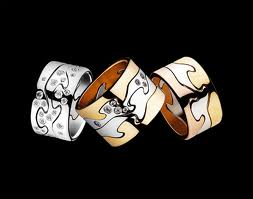
Contemporary Jensen: White and Yellow Gold Fusion Rings
References for this article: “Georg Jensen Jewelry (Bard Graduate Center), “Danske Smykker” by Thage, “Georg Jensen Silversmithy—77 Artists, 77 Years” (Renwick Gallery 1980), “The Unknown Georg Jensen” (Georg Jensen Society) and “Georg Jensen” by Janet Drucker.

